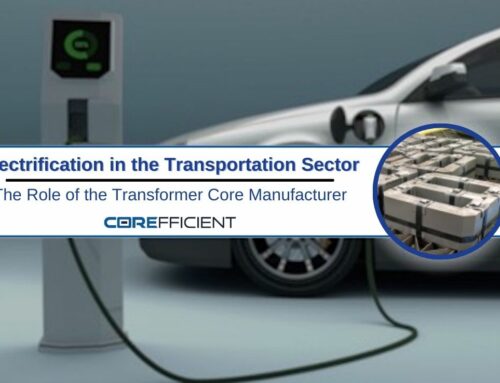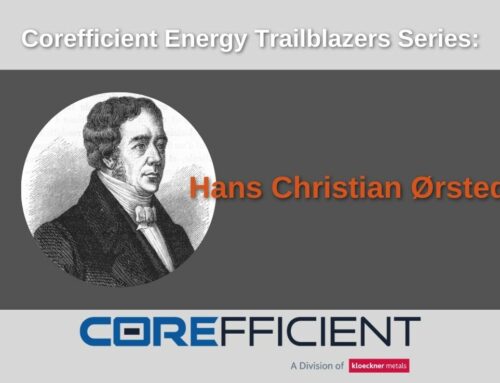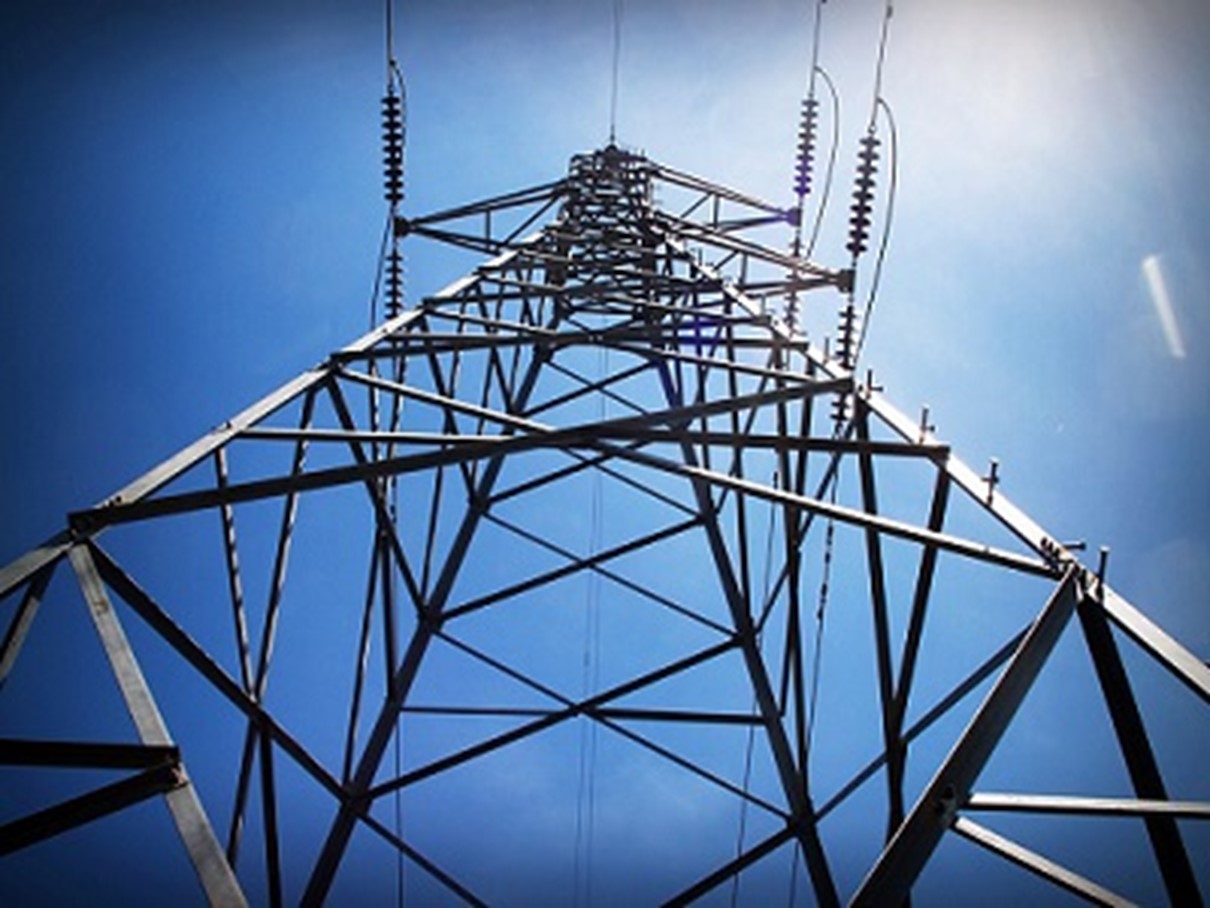
Innovation is needed now more than ever to meet growing energy standards. As a manufacturer, you deserve and expect efficient transformer core performance. There is no need to look any further than Corefficient. We ensure quality with every transformer core construction because we test our transformer cores at every step of the manufacturing process. Moreover, both our transformer core designs and design materials are carefully chosen to reduce transformer losses. In this way, we are able to meet stringent U.S. regulations while saving energy.

The magnetic flux distribution in the transformer core, and particularly at the joints, has a considerable influence on efficiency losses. This is the reason why step lap full mitre (SLFM) stack core designs superseding designs which use rectangular joints. Also, this new arrangement, in particular, yokes with “V” notches for the center leg, allowing for less core steel and translating into a considerable cost reduction of the final transformer.
Corefficient’s top-of-the-line GEORG brand TBA lines are able to handle material from 2 to 17 inches wide and a thickness of .009 to .014 inches. With high-speed, fully automated precision cutting lines we are able to meet our customers’ needs in a timely manner, either as logs or fully assembled cores with our stacking lines.
On the other hand, distributed gap wound cores – also known as DG cores – are popular in the distribution transformer industry. These cores have few joints so they can carry the flux nearly uninterrupted by gaps making a smoother transition over the cut region. They offer excellent performance with the added benefit of a very simple clamping structure and assembly process, often utilizing 75% fewer components than an equivalent stacked core.
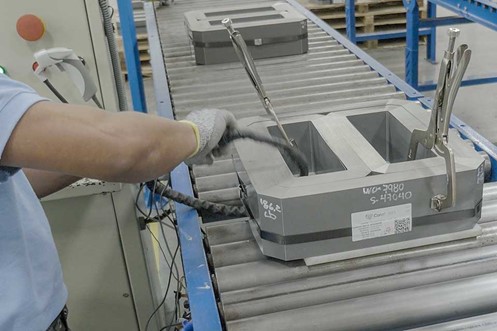
Corefficient has Tranco and AEM Unicore machines for either single phase or three phase designs. Tranco lines can handle material from 3 up to 10 ½ inches wide, and a thickness of .007 to .014 inches. AEM lines go from 1.18 up to 16.7 inches wide, and a thickness of 0.007 to 0.014 inches. Of course, a fundamental step for any wound core, in order to ensure performance of grain oriented steel materials, is annealing. Corefficient invested in a modern, rolling hearth annealing furnace (continuous) to relieve stresses induced through core manufacturing and return the steel to original properties.
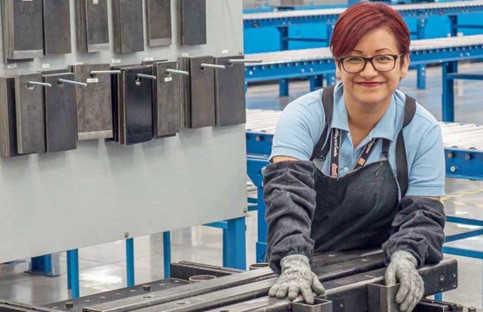
At Corefficient, we pride ourselves on our consistency of quality products and exceptional service. Nothing is left to chance because we maintain both electrical steel material testing and assembled core testing at the assembly line and upon request. Our confidence comes from our highly skilled team of professionals who are capable and ready to overcome any challenges or obstacles. Our state-of-the-art facilities and expertise guarantee that our transformer core construction will satisfy all our customers.
More about Corefficient
Corefficient has been at the forefront of energy innovation since its founding in 2016. Based out of Monterrey, Mexico, Corefficient is a premier supplier of energy efficient electrical cores throughout the U.S., Canada, and Mexico. Contact Corefficient’s North American sales engineer today at: 1 (704) 236-2510.

